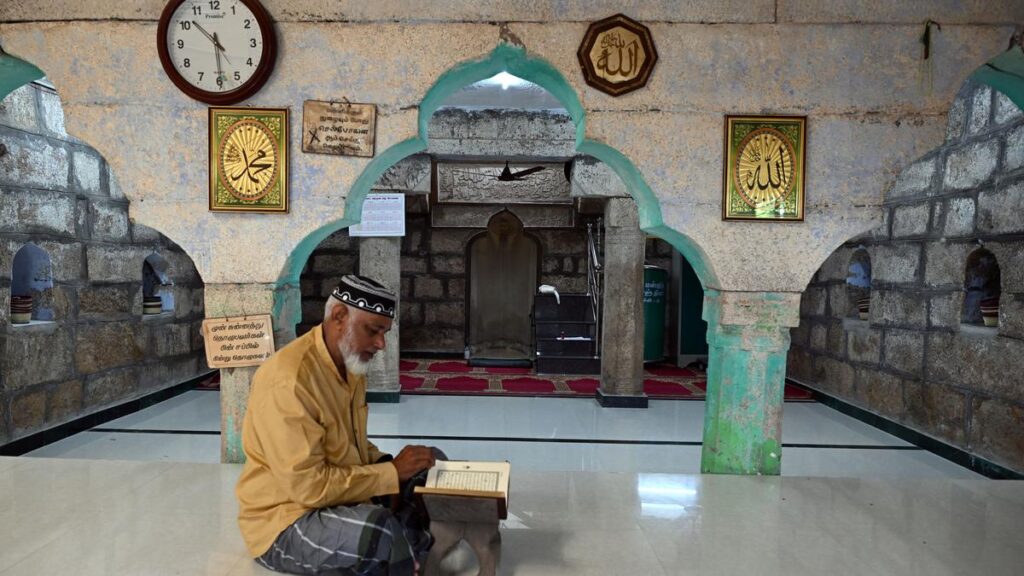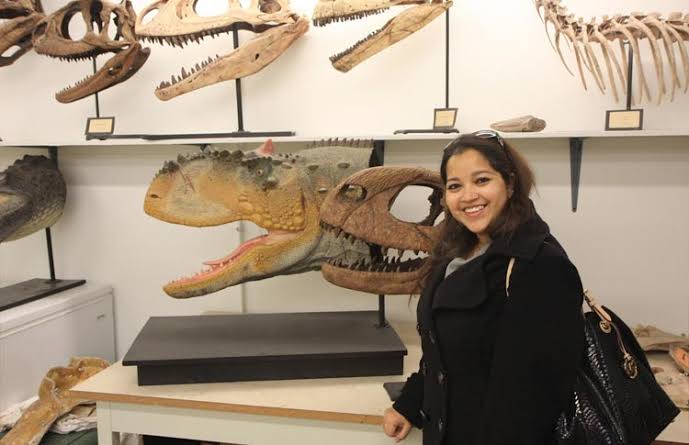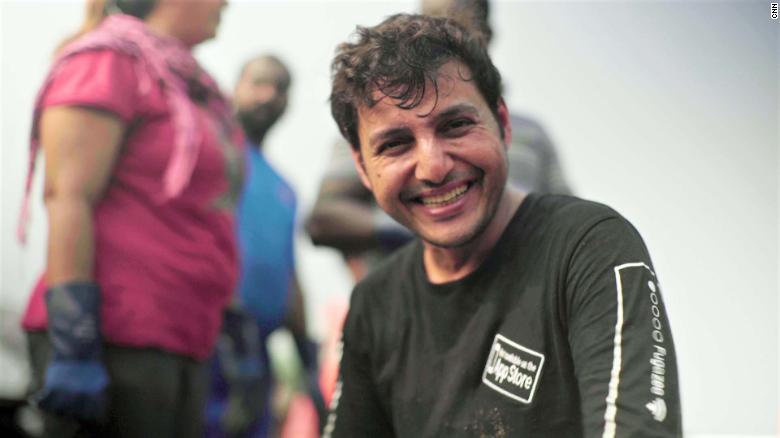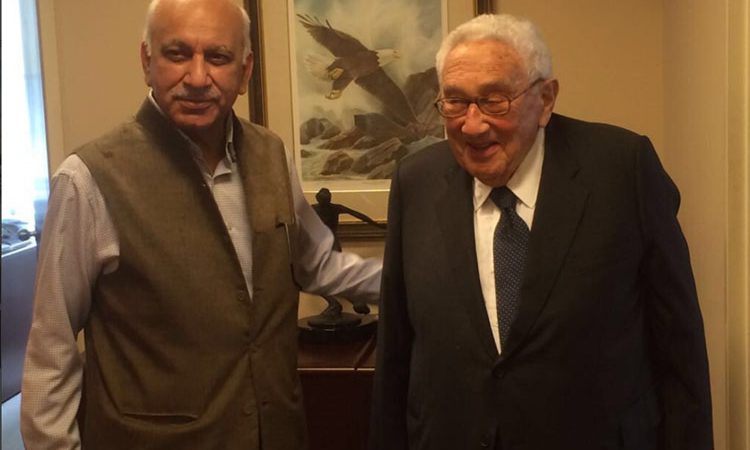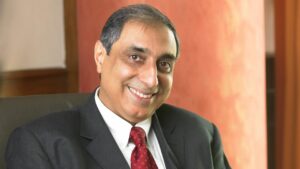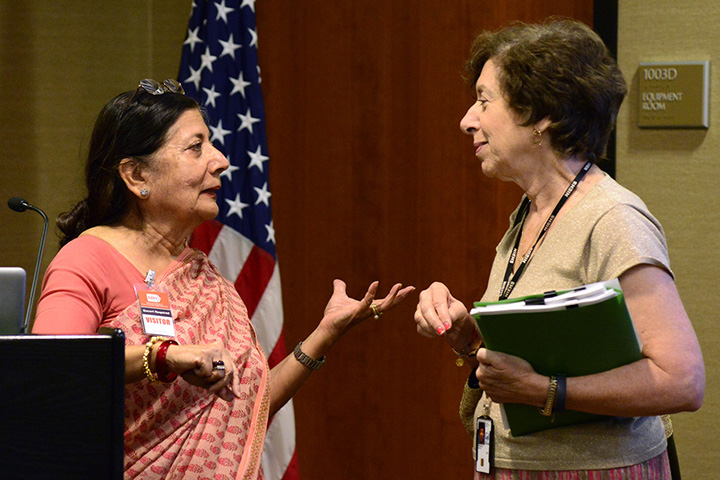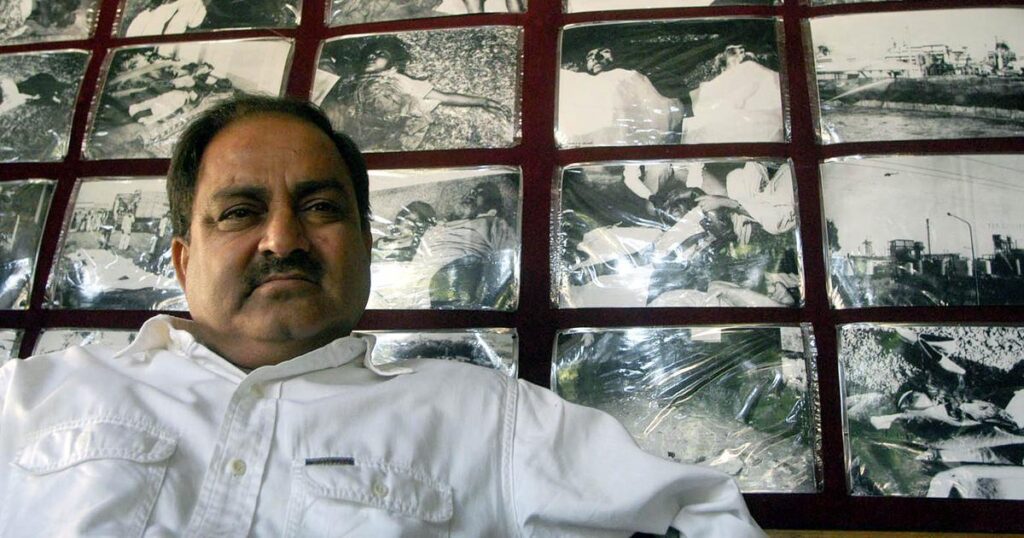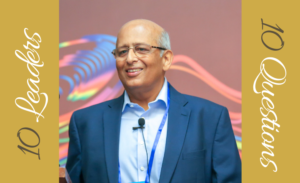Vaniyambadi (Tirupattur District), TAMIL NADU :
Urdu-speaking Muslims in Vaniyambadi trace their roots to two historical periods: the Deccan sultanates that popularised ‘Dakhni’ and Tamil-speaking migrants who reached the town from Thanjavur, Madurai and elsewhere in present-day Tamil Nadu in the late 19th Century and took up the language for survival and prestige.
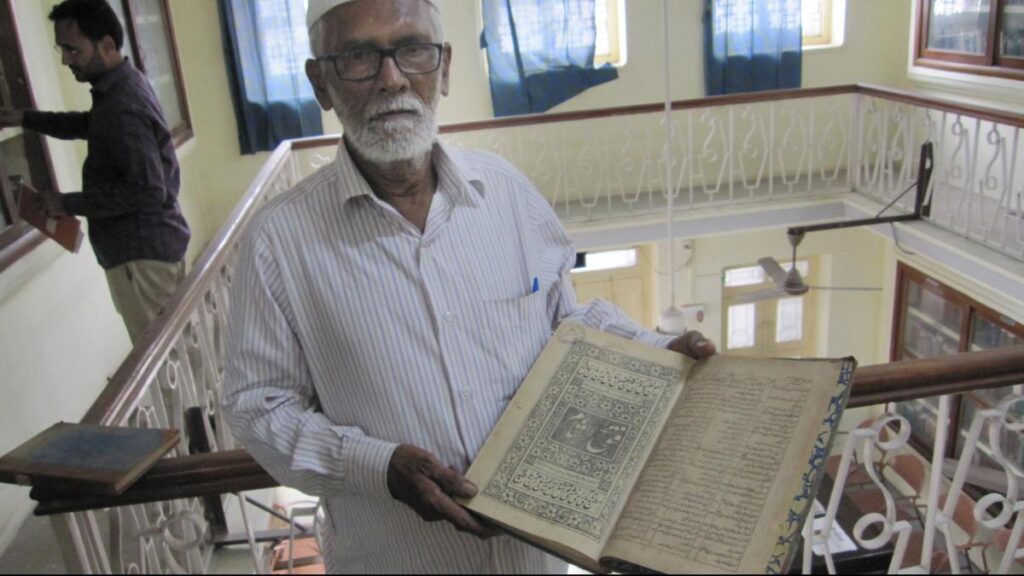
The Anjuman-e-Khuddam-ul-Islam and Islamiah Library houses over 6,000 Urdu books. | Photo Credit: Nahla Nainar
Surrounded by hill stations and on a route that puts it in close connection to Chennai, Bengaluru and the Kolar gold fields, Vaniyambadi in Tirupattur district is known as a hub of Tamil Nadu’s leather industry. It also enjoys a reputation of being ‘Aligarh of the south’, for its affinity to the Urdu language and the many educational institutions thriving here since the 19th Century.
Earlier this year, the National Council for the Promotion of Urdu Language (NCPUL) held the 25th All India Urdu Book Fair at the Islamiah College in Vaniyambadi to emphasise this inter-mingling of culture and linguistics of north India and the Deccan plateau in modern Tamil Nadu.
Urdu-speaking Muslims here trace their roots to two historical periods. First, the Deccan sultanates, notably Bijapur and Golconda in the 15th and 16th Centuries, that popularised ‘Dakhni’, an early form of Urdu of the region written in adapted Arabic script. Second, a sub-division of Tamil speaking migrants (earlier known as ‘Tamil Dakhni’) who reached Vaniyambadi from Thanjavur, Madurai and elsewhere in the present day Tamil Nadu in the late 19th Century and took up the language for both survival and prestige.
“Since Vaniyambadi was a politically vibrant place, Urdu gave people here a link to the north during the Independence movement. The leather trade took migrant Tamil leather merchants to Andhra Pradesh, Karnataka and Maharashtra, where Urdu was a necessity. Teachers from Deoband in Uttar Pradesh, at the seminaries and madrassas in this district, who spoke Urdu [with a north Indian dialect] also added to the predominance of the language,” says D. Abul Fazal, Assistant Professor, Department of History, Islamiah College.
A tool of assimilation
Urdu helped the Nawabs of Arcot make their presence felt politically with the British authorities. The Khilafat Movement (1919-1922), a campaign in India which opposed the British policy against Turkey during the First World War, also galvanised many Tamil-speaking Muslims to adopt Urdu and promote it as a pan-Indian language. “There are many families here who have a clear memory of their Tamil roots, before they ‘became’ Urdu-speakers, but most of the evidence is anecdotal. Over time, a social assimilation developed among the Dakhni Urdu speakers and Tamil Dakhnis,” explains Mr. Fazal.
In his book Dravidian Sahibs and Brahmin Maulanas-The Politics of the Muslims of Tamil Nadu, 1930-1967, S.M. Abdul Khader Fakhri notes that despite the internal tensions, “Tamil Muslims of the Arcot region were to make a major contribution to Urdu literature.” Writers such as Kaka Abdul Azeez Faheem (1898-1943), Lappai Khateeb Mohamed Azam ‘Maqbool’ (1898-1958) and Bangi Abdul Qadir Daanish Farazi (1922-1981) came up with a canon that has added heft to southern Indian Urdu literature.
Educational push
With Vaniyambadi emerging as the mercantile capital of the Arcot region during colonial times, wealthy businessmen started promoting both religious and secular education to improve social conditions. Madrasa-e-Mufeede-Aam, founded in 1887, is still functioning. The Vaniyambadi Muslim Educational Society (1901) established the Madrasa-e-Islamiah in 1903, with just three pupils. With its heritage redbrick building with vaulted arches and wrought iron spiral staircases, complemented by a new block, the school today offers classes to over 2,000 students in the Urdu, Tamil and English medium of instruction.
Islamiah College, mooted in 1916 by Vaniyambadi’s philanthropists, the Nizam of Hyderabad and the British, was founded in 1919 by local business leaders after the Nizam and the British withdrew their support. It is among the first Islamic institutions to offer “secular education” in the region.
Linguistic realities
Though Urdu swirls through conversations everywhere, with its typical Dakhni inflections playing off on Tamil (people take leave with the salutation aatun, quite similar to Tamil varen, roughly translating as ‘I will be back’), the language’s predominance is on the wane, says a section of residents. The Urdu mushaira (poetry gathering) remains a popular literary pastime in Vaniyambadi. But many Urdu speakers here do not know how to read or write the language. And a growing number has realised the importance of learning Tamil for reasons of employment and social integration.
“Until quite recently, there was a misconception in our region that only those who spoke Urdu were Muslims,” says A. Rizwana Shakil, an Urdu-speaking community activist and freelance journalist in Vaniyambadi, who writes in Tamil. A product of Tamil-medium education, Ms. Shakil says, “I have always felt Tamil, or for that matter any tongue, can be learned if one makes a sincere effort. Being bilingual has allowed me to translate manuscripts and also interact more easily with women from other communities,” she says.
“I learned Tamil after going to Chennai for my job. Everyone in Vaniyambadi, irrespective of their background, was always more comfortable speaking in Urdu,” says K. Ahmed Ehsan, who also chronicles the history of Vaniyambadi through his writings.
Literary heritage
The ‘K’ in Mr. Ehsan’s name refers to “Krishnagiri”, a nod to the migrant tradition of incorporating places or occupations in one’s official name. “You can find names prefixed with ‘Malayalam’, ‘Neyvasal’, ‘Madurai’ and ‘Cholavaram’, as also with professional labels like ‘yanaikar’ (elephant owner) or ‘kuthiraikar’ (horse owner) in the names even today,” muses Mr. Ehsan.
His great grandfather Krishnagiri Abdul Hameed was a well-known Urdu poet and one of the founders of Madrasa-e-Niswan (women’s school) in 1907.
Among Mr. Ehsan’s collection of rare books is Armaghan-e-Shaadi, (Gift from a Marriage), a travelogue compiled in 1927 by Dr. Khateeb Sir Ahmed Hussain, also known by his title Nawab Amin Jung Bahadur, originally known as Ahmed Hussain, from Vaniyambadi, who served the government of the Nizams Mahbub Ali Khan, Asaf Jah VI, and Mir Osman Ali Khan and Asaf Jah VII, of Hyderabad.
“The book describes the marriage of the Nawab’s son and the journey of the family entourage from Hyderabad to Madras for the occasion. With the dilution of Urdu learning, many such volumes that recorded social events of the time have also vanished,” he says.
The Anjuman-e-Khuddam-ul-Islam and Islamiah Library is home to over 6,000 books in Urdu on a wide range of subjects. “In its heyday, when at least 250 people used to drop by daily, we used to send back readers for want of space. But with people going online now, we hardly get 20 visitors these days,” says T.M. Abdul Ravoof Khalid, president of the library.
Established in 1939, the Anjuman used to be a popular gathering spot for political activists and students, said Mr. Khalid. “There was a craze for the Jasoosi Dunya (Detective World) novels by Ibn-e-Safi. We also have books published by Aligarh-born scholar and printer Munshi Nawal Kishore,” he adds.
With many Qalami books (manuscripts handwritten in Urdu calligraphy) beginning to show signs of age, the library has started creating a digital archive.
No visit to Vaniyambadi is complete without sampling its famed biryani. The delectable preparation of rice and meat cooked in a savoury confluence of flavours is irresistible. And, quite untouched by linguistics.
source: http://www.thehindu.com / The Hindu / Home> News> Tamil Nadu / by Nahla Nainar / August 18th, 2023

